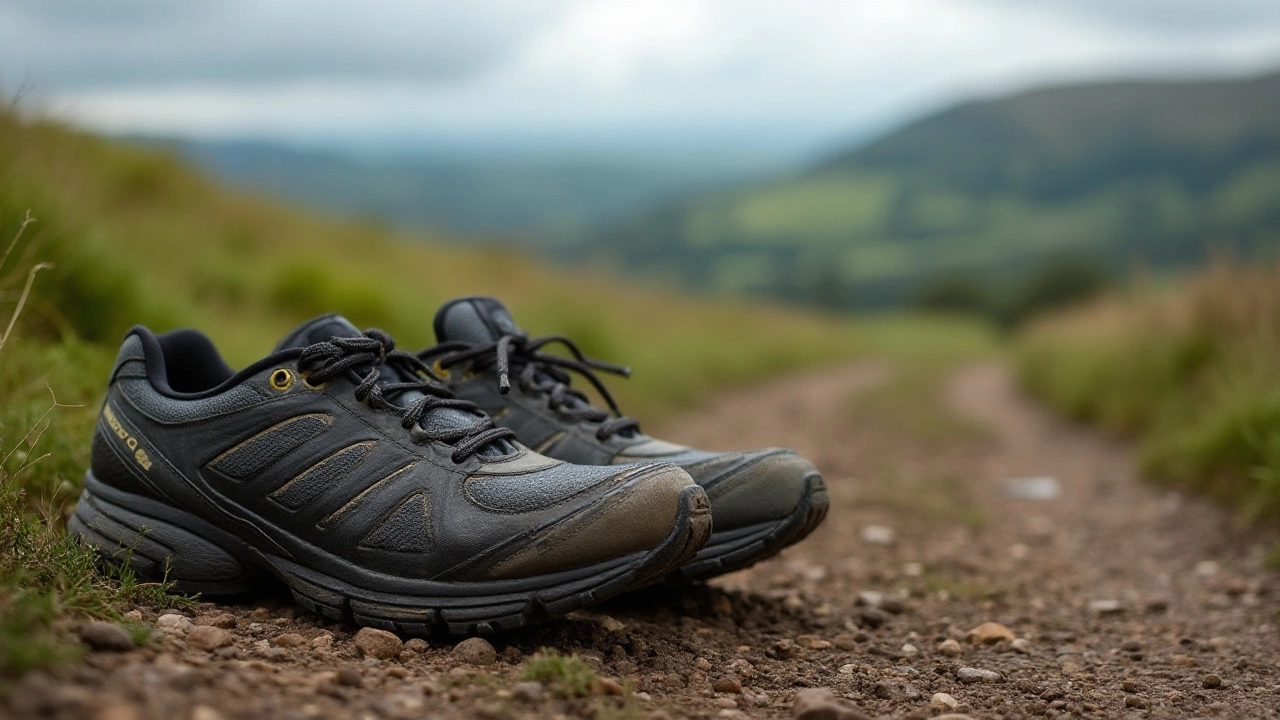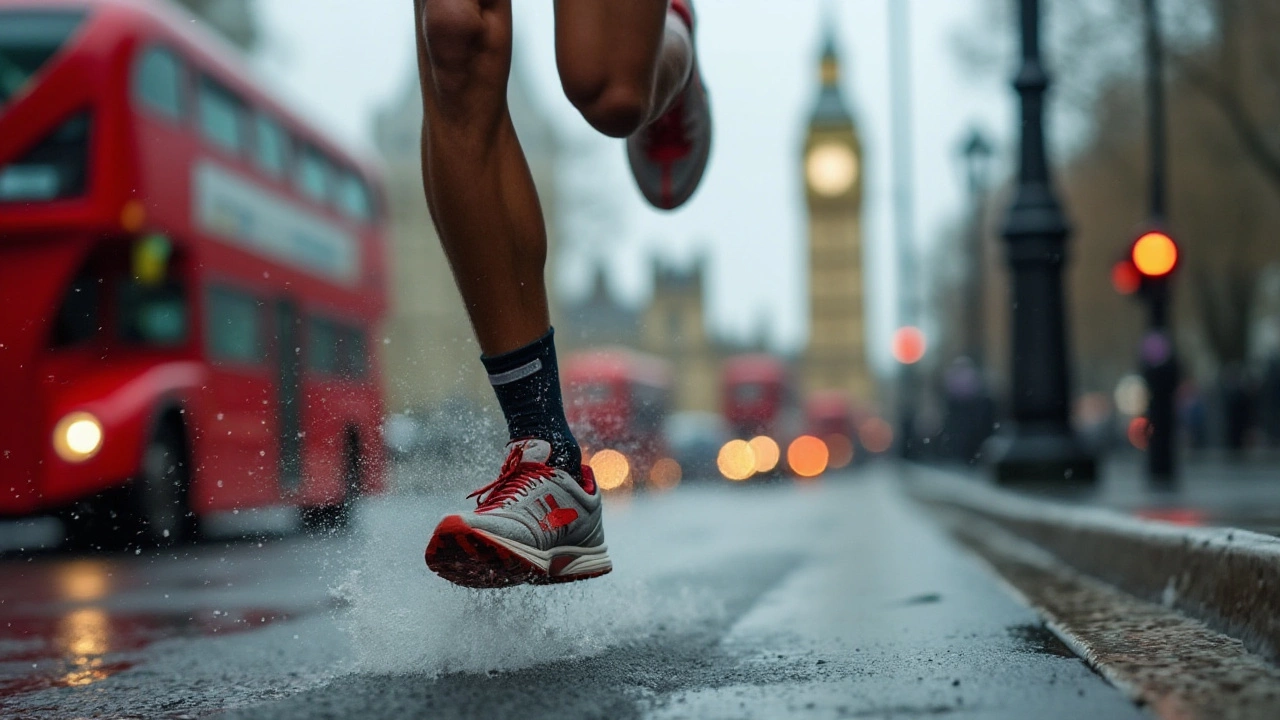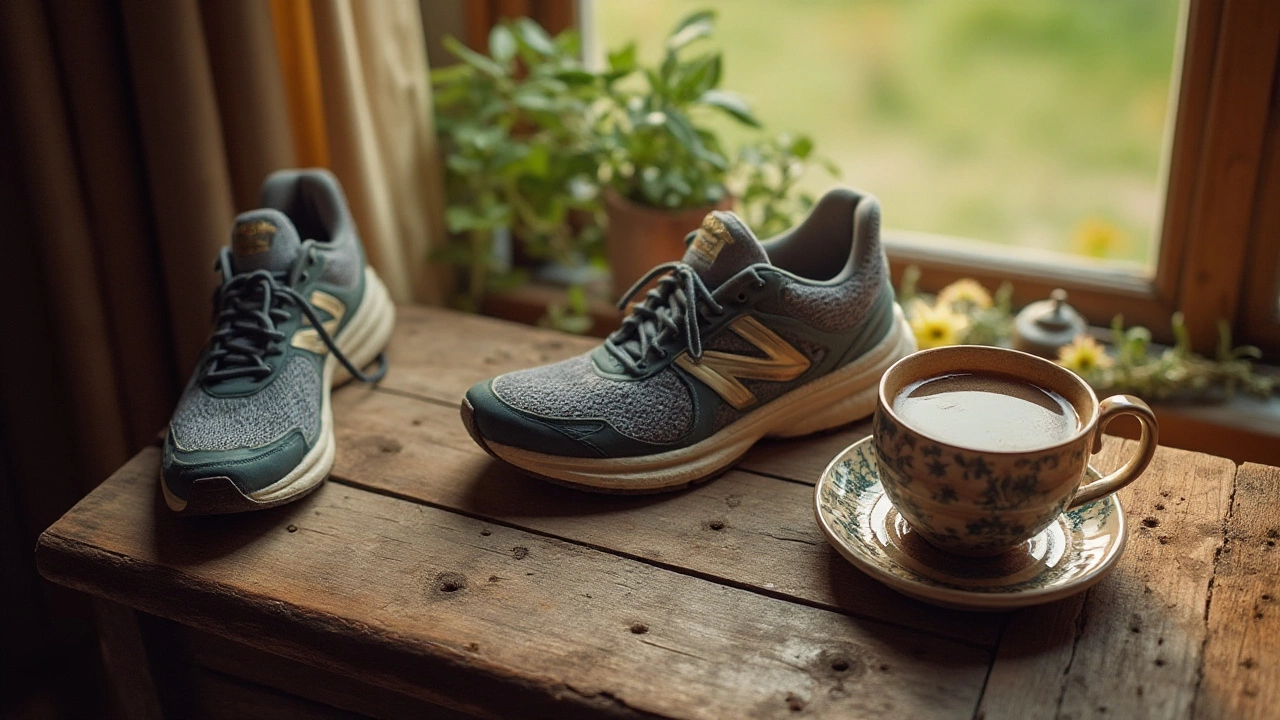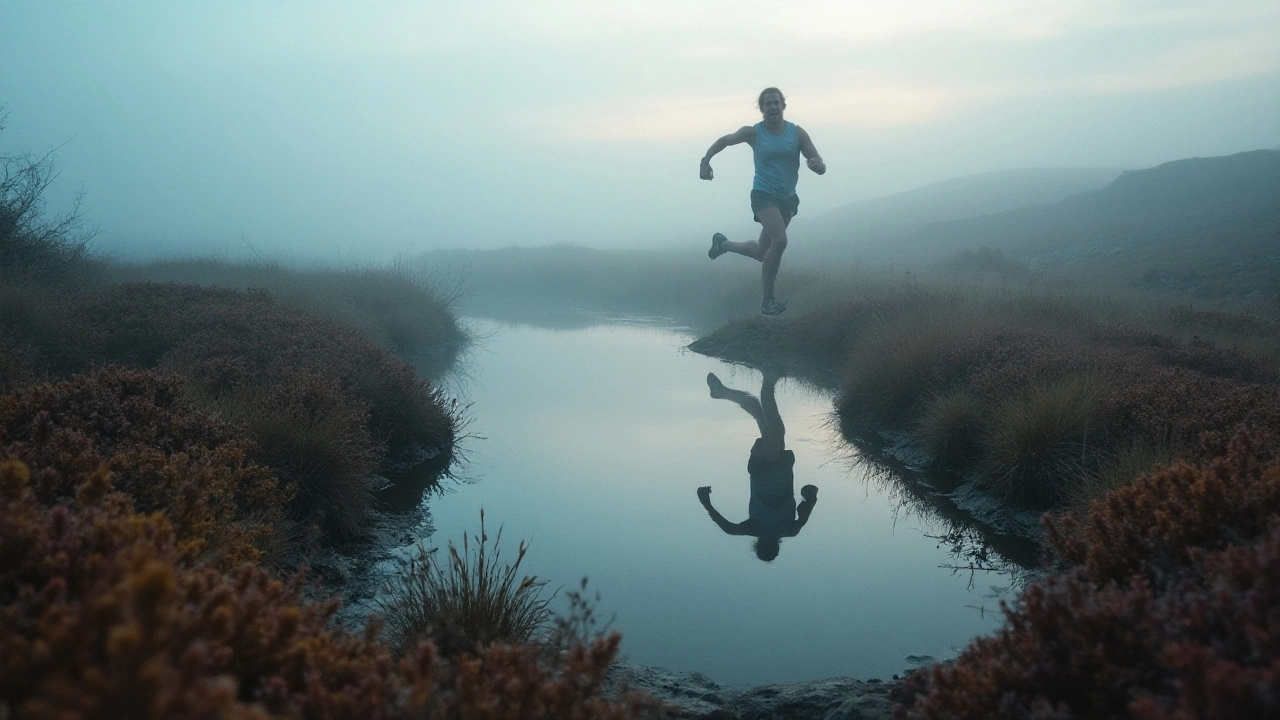When to Swap Out Your Running Shoes for Maximum Performance

Runners often form a special bond with their shoes, but it's crucial to recognize when they need to be replaced for the sake of performance and injury prevention. Knowing exactly when to swap your beloved running shoes for a new pair isn't always clear-cut. Factors such as how often you run, the surfaces you pound on, and your unique running style all contribute to wear and tear.
Many veteran runners suggest that monitoring changes in comfort and performance is key. With a few handy tips and a keen eye, you can ensure your footwear supports each stride, keeping you safe and your runs enjoyable.
- Understanding Shoe Lifespan
- Signs It's Time for New Shoes
- Tips for Prolonging Shoe Life
- Choosing the Right Replacement Pair
Understanding Shoe Lifespan
If running is part of your routine, you'll know that having the right pair of running shoes isn't just about fashion. It's about support, cushioning, and ultimately, keeping you injury-free. But how long can a pair really last? Well, while some folks can squeeze in hundreds of miles with the same pair, others find they need to replace their shoes much sooner. Experts typically suggest rotating your running shoes somewhere between 300 to 500 miles, which is roughly 483 to 805 kilometers. However, this is not a hard and fast rule, as the lifespan can depend on factors like the shoe’s material, your weight, and the kind of terrain you run on.
When considering the longevity of athletic footwear, knowing your shoe type is crucial. Running shoes are manufactured with specific materials and designs aimed at different types of athletic activities. The cushioning layer, which provides support and comfort, starts to compress over time, a process accelerated by high-impact use. A diligent runner can track their mileage with a simple record or one of the many apps available today. If you notice discomfort or pain, your shoes might have seen better days. Durability is also influenced by storage. Shoes left in damp or extreme temperatures might break down sooner—a bit of trivia but worth remembering if you leave your trainers in the car.
There are variables worth considering aside from just miles. For instance, if you're a runner who enjoys a bit of variety, switching between multiple pairs of shoes can extend their life. This approach gives each pair time to air out and decompress, preserving their structure longer. The mix of shoes can be as important as diet diversity. Speaking of science, a study in the British Journal of Sports Medicine indicated that alternating between different pairs of shoes could lower your injury risk by 39%, as each pair affects the pressure on different joints and muscles. Perhaps that's something to chew on when choosing your next replacement pair.
Acknowledging external contributors such as climate and running surface are helpful too. Pavement pounding is drastically different from trail running. There's talk amongst athletes that those frequently running on rough terrain like forest trails may find their traction wears out faster compared to those sticking to indoor tracks or gym treadmills. Whether on a plowed asphalt road during a classic UK drizzle or a leisurely jaunt around the park, your running style could determine how robust your shoe's lifespan will be.
According to Runners World, "Running shoes generally last around five to six months for someone who runs 20 miles a week regularly." This highlights the importance of not just tracking how far you've gone but also how frequently. It's beneficial to remain aware of the subtle signs of wear and be in tune with the signs your body might be sending.

Signs It's Time for New Shoes
You've been running consistently, embracing the freedom and joy it brings, but one day, your trusted running shoes just don't feel quite right. Recognizing the signs that it's time to swap out your running shoes is crucial for maintaining comfort and support. A clear indicator is physical wear and tear. As durable as they may seem, shoes aren't invincible. Check the soles first. If the tread resembles a smooth skating rink rather than a rugged terrain conqueror, it's time to upgrade. The tread is designed to provide traction, and once it's worn out, you'll find your runs more slippery, especially in wet conditions.
Another telltale sign is discomfort or pain during your runs. It might start as a little niggle that grows into something more painful. When your athletic footwear begins to break down, the cushioning and support that protect your joints start fading. This can lead to increased stress on your feet, knees, and back. Many runners report that knee and hip pain can often be traced back to worn-out shoes. Noticing any changes in your running gait or persistent aches that seemed to have appeared out of nowhere? Pay attention to your shoe situation—it could be the culprit.
Keep an ear out for unusual noises from your shoes. If you hear squeaking or a distinct change in sound with each stride, investigate the sole and midsole for damage. Shoes can accumulate moisture over time, leading to structural changes. This can prevent your shoes from functioning effectively. Check the insides too. The inner lining can wear away, producing friction and leading to blisters, hot spots, or discomfort.
"A thorough examination every few months or after significant mileage can reveal subtle issues," says Sarah Lavender Smith, author of 'The Trail Runner's Companion.' This can play a major role in preventive care.
Your running frequency and conditions also play a part in determining shoe lifespan. On average, running shoes last between 300 to 500 miles, but a runner logging heavy miles on asphalt might find their shoes wearing out faster. Take into account the surfaces you run on; trails typically cause shoes to break down at a quicker rate due to ruggedness and debris. Keeping track of mileage with a simple journal or smartphone app can help gauge when your shoes are approaching retirement.
Visual inspections can be paired with a simple "twist test." Gently twisting your shoes in opposite directions should reveal their flexibility. If the shoe bends too easily, your support structure may have collapsed, suggesting your shoes are no longer optimal. Another quick tip is the "press test"; apply pressure on the midsole with your thumb. If it feels completely compressed without any cushioning bounce-back, it’s an indicator that the midsole has deteriorated. In the running world, these simple checks often yield important insights.

Tips for Prolonging Shoe Life
Keeping your running shoes in tip-top shape can seem a bit like an art, as there's more to it than just slipping them on for a jog around the park. One of the simplest yet often overlooked strategies is rotating between two or more pairs. This might sound extravagant, but giving your shoes at least 24 hours between runs allows the cushioning to bounce back, enhancing their lifespan noticeably. It's not just the shoes that benefit—your feet might thank you too for the consistent support they receive from different angles.
Avoiding exposure to extreme conditions is another crucial tip. Shoes suffer in the same way we do under direct sunlight or when drenched in rain. If they're soaked through after a rainy jog, it's best to let them dry naturally in a cool, shaded place. Using heat sources like radiators can warp the materials, reducing their longevity. Besides, keeping your shoes clean can also make a difference. A gentle scrub with a non-abrasive brush and mild soap heightens their durability.
Investing in a good shoe cleaning routine ensures the longevity of your athletic footwear. Dirt and grime, lovably persistent foes, can affect the shoe’s fabric and the integrity of its materials. Cleaning your shoes regularly helps maintain their original structure and appearance. For tougher spots, some runners swear by a mix of baking soda and water paste for those stubborn stains. As enthusiasm is contagious, "A well-maintained pair of running shoes can effortlessly add more miles to your journey," says renowned coach Tom Anderson.
The way you handle your shoes around your workouts plays a part too. Kicking them off using the opposite heel or tugging aggressively at the back can cause unnecessary wear and tear, especially on the heel counter. Taking the extra few seconds to unlace them before removing increases their longevity remarkably. Ensuring that your shoes are laced properly during runs further extends their life, providing the necessary support and limiting the stress placed on specific areas of the shoe.
| Tip | Benefit |
|---|---|
| Rotate Between Shoes | Allows for material recovery, enhancing longevity |
| Natural Drying | Prevents material warping and degradation |
| Regular Cleaning | Maintains structural integrity and appearance |
| Proper Removal | Limits wear on heel counter and materials |
Making these habits a part of your routine will keep your trusted sneakers in action for much longer than you might have thought possible. These tend to prolong the life of your shoe lifespan considerably, saving you from frequent trips to the sneaker store and giving you more miles to glide through.

Choosing the Right Replacement Pair
Selecting new running shoes can be both an exciting yet daunting task, especially when faced with countless options that promise the perfect run. The first step is to assess your specific needs as a runner. Are you preparing for a marathon or just enjoying a leisurely jog through the park? Determining the primary use of your running shoes will guide your decision significantly. For instance, trail runners will have different requirements compared to road runners, a distinction clearly visible in shoe grip and durability.
Another essential consideration is your foot type and gait. These factors directly influence the support and flexibility you require in a shoe. A visit to a specialty running store can be invaluable, where professionals often analyze your stride using video gait analysis to recommend suitable options. Remember, finding a shoe tailored to support your unique form can prevent injuries and enhance running efficiency.
Comfort should never be underestimated. Although aesthetics might catch your eye, the feel of the shoe trumps the look. A proper fit is crucial, ensuring there’s enough room for your toes to wiggle yet snug enough to prevent slipping. As a rule of thumb, aim for about a thumb's width of space between your longest toe and the end of the shoe. This prevents discomfort during longer runs, where your feet might swell.
According to Runner's World, a trusted source in athletic advice, "A runner’s perfect shoe should feel perfect from the first step. Runners must trust their instincts—if it doesn’t feel right, it’s not likely to get much better over time."
Don’t forget the importance of trying on multiple pairs and even running a short distance in them, if possible. This trial step can reveal pressure points or slipping that aren't immediately noticeable when standing still. Additionally, while buying, consider purchasing two pairs if budget allows. Rotating shoes not only extends their lifespan but also allows for varying support on different running days.
Lastly, keep in mind that technological advancements in athletic footwear mean new models are released frequently, yet this doesn't necessarily make older ones obsolete. Take time to research and, importantly, read reviews from fellow runners who share their experiences about fit and function. By focusing on what you as a runner specifically need, you’ll be well on your way to making strides in your perfectly chosen pair.
